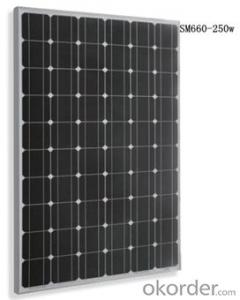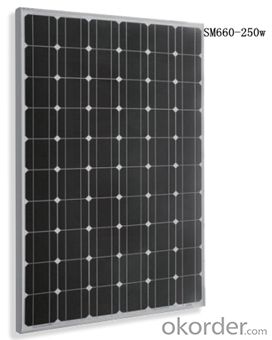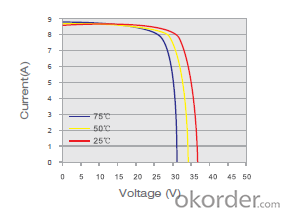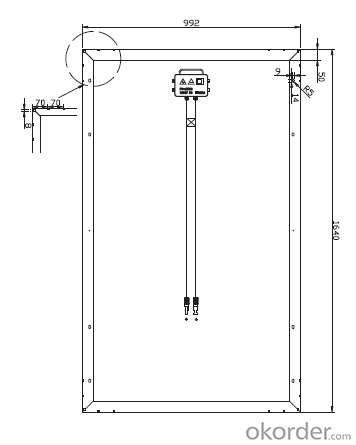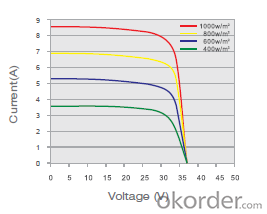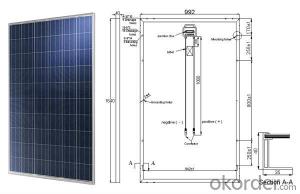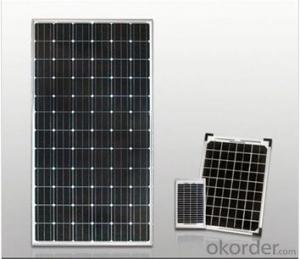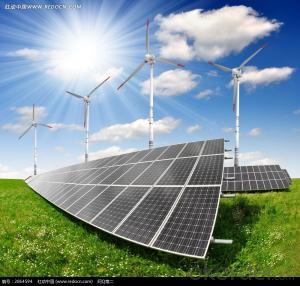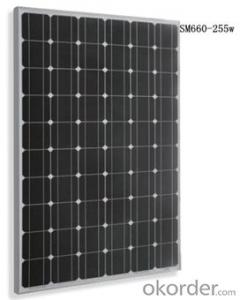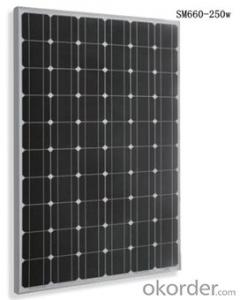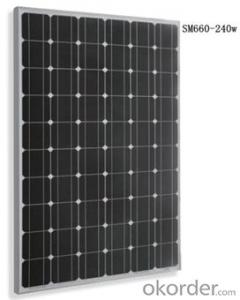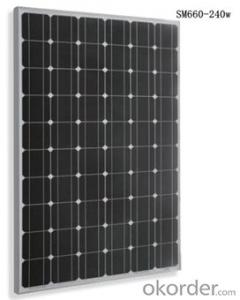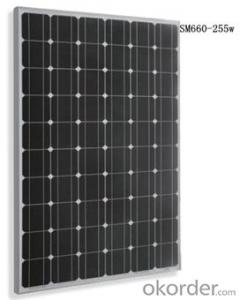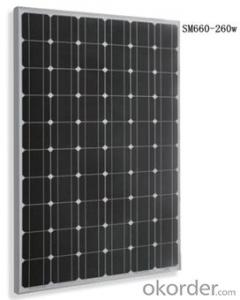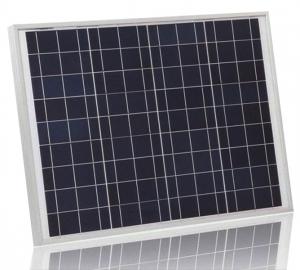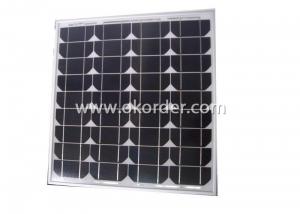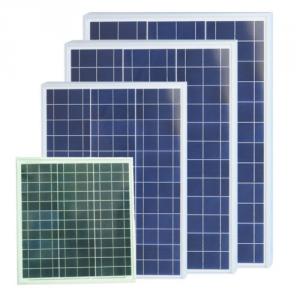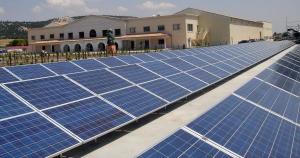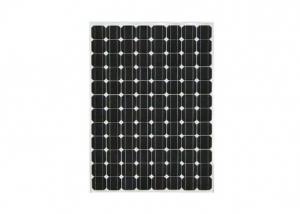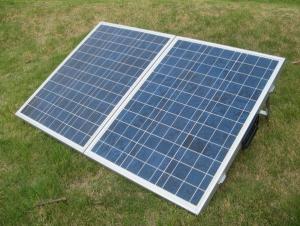Monocrystalline Solar Module SM660-250W with Sun Tracking Solar Panels
- Loading Port:
- Shanghai
- Payment Terms:
- TT OR LC
- Min Order Qty:
- 1 set
- Supply Capability:
- 80000 set/month
OKorder Service Pledge
OKorder Financial Service
You Might Also Like
Product Description:
1.Structure of Monocrystalline Solar Module SM660 250W Series Description:
Monocrystalline Solar Module SM660 250W: High efficiency crystalline solar cell. Even if under the weak light, the solar module can produce maximum power output.
II Tempered glass (toughened glass): Anti-reflecting coating and high transmission rate glass increase the power output and mechanical strength of solar module.
III EVA and TPT: Using high quality EVA and TPT to prevent destroying and water.
IV AI frame: Without screw, rner connection. 6 holes on the frame can be installed easily.
V Junction box: Multi function junction box with water proof.
VI Long lifetime: ≥25 years; Less power decrease.
VII Good performance of preventing from atrocious weather such as wind and hails.
VIII Resisting moisture and etching effectively, not effected by geology.
IX The certificate issued by international authority: TUV, IEC, CE.ISO9001.MCS
2. Characteristics of Monocrystalline Silicon Solar Panel:
• Guaranteed tolerance +3%
• High manufacture standards
• Reliable power output
• High module efficiency
• Module efficiency up to 15.5%
• Cells efficiency up to 17.6%
• Strong compressive strength
• Certified to withstand high wind of 2400Pa
3. Standard Test Conditions of Monocrystalline Silicon Solar Panel:
The opto-electrical specifications shown below are stabilized values being measured at Standard Test Conditions, Irradiance: 1000W/m2, Spectrum: AM1.5 at 25°C, The info below is subject to manufacturing tolerances. Where appropriate minutes of measurement are available and are used for the dimensioning of the installation.
Advantages of Polycrystalline Silicon Solar Panel
• 25 year transferrable power output warranty: 10 years / 90%, 25 years / 80%*
• 12 year material and workmanship warranty
• Timeliness of delivery
• Quality Products certified (TUV, IEC, CE.ISO9001.MCS)
4. Solar Panel Images
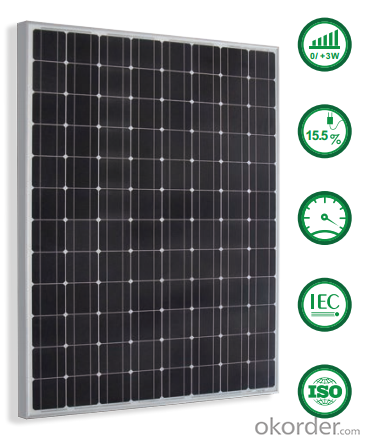
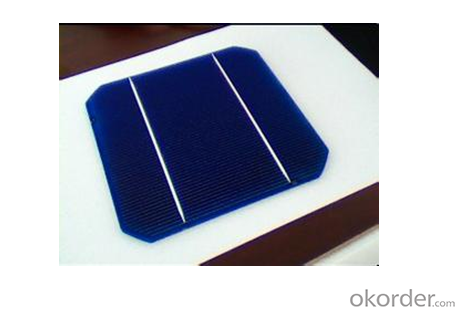

5. Monocrystalline Silicon Solar Panel Specification
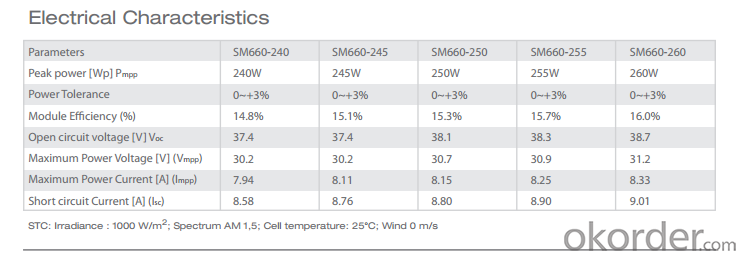
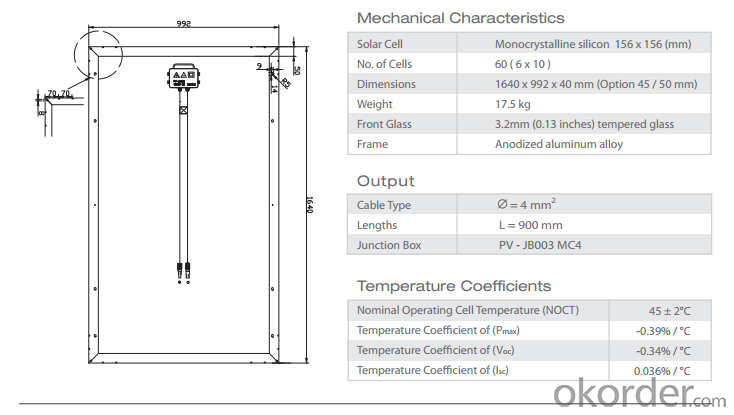


6.FAQ
We have organized several common questions for our clients,may help you sincerely:
①How about your company?
We are a private-owned high-tech company who specializes in developing, manufacturing and marketing of silicon ingots, solar wafer, solar cells, solar modules, PV systems and solar applications products.
At present, We has one research & development team, whose members are well-known experts in photovoltaic area. We also have advanced production and test equipment.
②How to guarantee the quality of the products?
Our products have been certified by CE, CEC,MCS, IEC61215, IEC61730 and ISO9001.
• 25 year transferrable power output warranty: 10 years / 90%, 25 years / 80%*
• 12 year material and workmanship warranty
• Timeliness of delivery
• Quality Products certified (TUV, IEC, CE.ISO9001.MCS)
③How long can we receive the product after purchase?
In the purchase of product within three working days, We will arrange the factory delivery as soon as possible. The pecific time of receiving is related to the state and position of customers.Commonly 7 to 10 working days can be served.
- Q: I have a cabin that is way out in the middle of no where, it would cost 000's of dollars to get power to it. If I have a 8,000 BTU air conditioner that runs on 25 volts and 5 amps (or 875 watts)How many solar panels will I need to run this during the day, plus charge the batteries to run it all night? How many batteries would I need
- Unless you have a good charge controller, the battery will never charge, as a lead acid battery requires 5 volts to charge. Ans you don't tell us the capacity of the battery? Is the solar cell only 5 watts? That is amp if it develops 5 volts. Assuming the solar panel is good for 5 watts and 5 volts, that is only amp. so you are charging the battery with amp and discharging it with 5 amps, so how long you can do that depends on the size of the battery. But it will discharge in at most 5 hours with a large battery, and the solar panel will take several days to charge it up again at amp. The best you will be able to do with that 5 amp load is perhaps hour a day, which is 2 watt-hours. The solar panel will be able put back amp for 2 hours at 5 volts, which is 5 watt-hours, which will give you perhaps 2 watt-hours in the battery. .
- Q: Can solar panels be used to power a gas station?
- Yes, solar panels can be used to power a gas station. Solar energy can be harnessed through the installation of solar panels on the roof or in the vicinity of the gas station. This renewable energy source can then be used to power various operations and equipment at the gas station, reducing reliance on non-renewable energy sources and lowering overall operational costs.
- Q: Can solar panels be installed on the ground?
- Yes, solar panels can be installed on the ground. Ground-mounted solar panels are a popular option for residential, commercial, and utility-scale solar installations. They are typically mounted on racks or frames that are secured to the ground, allowing the panels to capture sunlight and convert it into electricity. Ground-mounted solar panels are often preferred when there is limited roof space or for installations that require optimal positioning and easy maintenance.
- Q: Do solar panels require cleaning?
- Yes, solar panels do require cleaning. Over time, dust, dirt, bird droppings, and other debris can accumulate on the surface of solar panels, which can reduce their efficiency. Regular cleaning helps to maintain optimal performance and maximize energy production.
- Q: So you know how the bigger the surface area exposed to the heat radiation means the quicker it'll heat up.Is this what happens with solar panels, they have a large surface area exposing to the sun, so they can get more heat?
- - Radiation from the sun is mostly Ultra- Violet. - There are 2 types of solar panels, Solar thermal collectors and photovoltaic cells. - Put simply, photovoltaic cells take the UV rays and produce electricity. - Solar thermal collectors (which is probabl
- Q: Installing solar panels requires a big initial investment. Before I make this investment I want to check to see if the money I will save by installing solar panels will actually pay for this investment, in the long run. To calculate my savings, we should consider the area (square feet) I currently have available to install solar panels. Look at the available sunlight and its intensity in my state each month of the year. Based on this data estimate how much energy my solar panel will generate. Then compare that with how much energy (kWh) I currently consume based on my electricity bill.
- you have a really good formula for figuring out what you will save. as long as you dont live the the arctic during the winter months you should be fine! this investment will definitely pay off in the long run and help the environment. just like the other guy said, the utility company would have to pay you back any excess energy you produce that you dont use! you can calculate how much your average electric bill is and then compare by how much you would be saving. you can multiply the number by 5 and 0 years and so on to see how much you would save ultimately! this is a great way to save your own money and never have to be dependent on the electric company again! yes you will definitely need a battery to hold a charge for overnight use good luck!
- Q: Is there a small solar panel system that I can put in my bedroom window and charge my phone and run an alarm clock off of? Or one I can run a microwave off of?
- tell me at roughly $500 each, just how many panels would you like to buy? ;-)
- Q: why don't we take a cue from mother nature and make our soar panels like trees? thousands of leaves or needle (like a pine tree) instead of one big flat panel? I mean it seems to work pretty good for all the plants i see why would it not work for us. It would be aesthetically pleasing and with the right engineering wouldn't it make them not have to worry about tracking the sun? i already have some ideas about the process of making them just no available labratory.
- Because we and the trees are trying to solve a different problem. We want electricity, a tree wants light (and some heat) for photosynthesis. In getting the electricity we use Silicon for solar panels. (Sometimes Gallium Arsenide). And we exploit the same thing in Silicon that allows them to be computer chips. The fact that they conduct differently when voltage is applied. But for a solar panel that is done essentially in reverse. We GET a voltage difference (electricity) from shoving energy through it. Look up junction bias on google or yahoo for explanation. But the DESIGN problem is: You have to couple these panels together the right way - according to their bias. You can't string them up willy nilly. There is a pattern. And when one breaks in this pattern. (I mean when the actual panel cracks, which they do easily as they are brittle). It can change the overall bias. This can make even be worse than if it was removed, it can actually fight against the working ones. The efficiency is there in arranging them like a tree, but the practicality of maintenance would be daunting.
- Q: I am in need of solar panels and the batteries that I can store the energy in. I need to be able to run a laptop, cell phone, and LED lights from it. When I research I see all sorts of options with regards to watts, VMPs, and AMPs. I also see that I may need a controller, an inverter, and various other components. Can anyone help me through these terms and what i need to know in order to efficiently generate and store the electricity. Thanks
- Okay well solar panels only work under sunlight and it saves alot of electricty as compared to your normal switches.And it also saves money=D.One thing though...it only works under sunlight...remember this fact. Power storage simply means a device which can store power. Well a generator stores power and a power station too!! Otherwise they can't flow through our electric current..... So for power usage simply is like on the fan/lights/mobile/computers/modems/e.t.c are considered as power usage as you are using the power=P Well hope this information helps you!
- Q: How many solar panels do you need on your house to power your heater in winter?
- Lets assume the panels are 00 Watt panels. You would need 50 panels to just provide power for the heating maybe 2-4 hours a day on nice sunny days. Get the picture? Remember the rating on a panel is peak power when the sun is at just the right position. Solar panels are not normally a good system for heat or air conditioning. They simply get much to large and expensive, and are not reliable because the sun does not always shine. If you are in an area where the electric company will purchase any power you do not use and give you a credit, then you can build a system much larger than you need in the spring and fall and might be able to produce enough during these periods and get a credit. You then use the credits in the winter for heat and in summer for cooling. This requires a detailed study of your uses all year, then designing a system that produces enough to cover your yearly KWH load. It will probably be very expensive, but many are using taxpayer dollars subsidies and electric company rebate programs to make these system more cost-effective. You would need to check your local area utility company.
Send your message to us
Monocrystalline Solar Module SM660-250W with Sun Tracking Solar Panels
- Loading Port:
- Shanghai
- Payment Terms:
- TT OR LC
- Min Order Qty:
- 1 set
- Supply Capability:
- 80000 set/month
OKorder Service Pledge
OKorder Financial Service
Similar products
Hot products
Hot Searches
Related keywords
